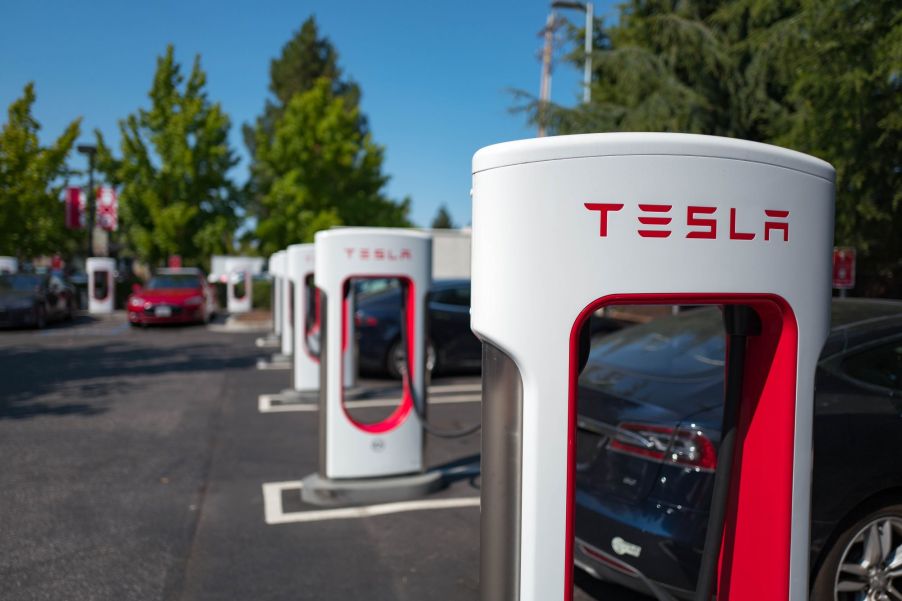
Tesla to Charge Non-Tesla EVs Extra to Use Its Supercharger Network
Tesla has dominated the electric vehicle landscape since its inception in 2003. It has since become the premier electric car manufacturer, setting the bar for all other EVs in the industry. Its proprietary battery technology and electric power train have changed the way that vehicles operate. The vision for Tesla is that all vehicles will rely on electricity in the future and pave the way for a cleaner environment by eliminating gas-driven vehicles.
This begs the question, how will people charge their cars away from home? This question has prevented many consumers from switching from the quick-fueling gas-powered vehicles they are accustomed to. Tesla is crafting a robust network of supercharger charging stations across the world, hoping to eliminate the worry that some consumers are having about making the switch to electric. But what price will non-Tesla owners pay for that supercharge?
Superchargers are popping up everywhere

It wasn’t so long ago that electric vehicle charging stations were few and far between. Thanks to Tesla’s efforts to install more charging stations worldwide, stations are dotted along major routes and convenient amenities in the U.S. such as traditional fueling stations like Sheetz and restaurants such as McDonald’s.
Tesla superchargers can recharge up to 200 miles in 15 minutes. As of July 8, 2021, there are 1,088 stations in the U.S., and the number will continue to climb in years to come.
Tesla will open its charging stations to other brands
Tesla is by no means the only EV manufacturer in the world. Virtually every car brand now has some iteration of their own EV. Volkswagen has a plan in place to make their entire lineup electric by 2030. This means that there will be many more vehicles that will need to be charged away from home in the foreseeable future.
Tesla has begun to open its charging network to other non-Tesla EVs as well. The automaker will offer an adapter used by the non-Tesla vehicle, which may or may not be available at the charging station. The user will need to have the Tesla app, which will then pay for the charging station.
However, the company has stated that if the charging rate is super slow, they will be charged more. Also, if the stations are full, they may be charged more versus if the station is empty and not many cars are waiting to be charged. Tesla stated that other EVs using the stations would increase the network faster, so it’s a win for everyone.
How the changes will affect Tesla
Tesla is banking on other EVs using the charging stations, which will reduce its cost that it can then pass on to the customers. Tesla has stated that if the network becomes more profitable, it will allow them to grow the network faster.
However, opening up the charging stations to other EVs have some Tesla owners concerned about congestion. To overcome this, The company has stated that it will charge premium prices when chargers are in high use to deter unnecessary charging. Also, vehicles that take longer to charge during these times will incur a higher cost.
Tesla doesn’t expect this to be a long-term solution, so it is just a temporary workaround until more chargers can be installed overall.
The automaker is bargaining on the future of EVs everywhere, and it is willing to do its part to further the movement. Opening up its already growing number of chargers will allow owners of non-Tesla vehicles to access charging and make it more convenient to own and operate an electric vehicle, which is a winning proposition for everyone.


